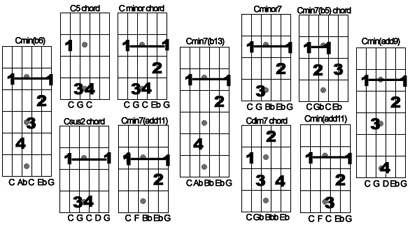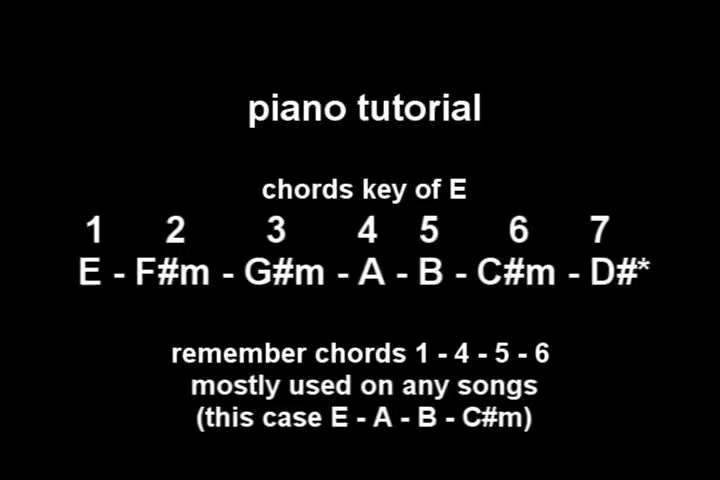

- Through it all chords key of d full#
- Through it all chords key of d pro#
- Through it all chords key of d series#
- Through it all chords key of d free#
This time around we’ve added the 11th (G) to D minor, the 9th (A) to G, and the 13th (A) to C major. The same applies when we add the note D to the C major chord at the end. When you add the note E to both the D minor and G chord, you get much more color to the progression – this brightens up things quite a bit! In these excerpts, we’re going to start adding more extensions while continuing to voice lead the higher parts of the chord.
Through it all chords key of d pro#
Smooth voice leading is a common theme you’ll see through all the 2 5 1 jazz chord progression guitar voicings I’m covering today – it’s the key to sounding like a pro jazz player.Ģ 5 1 Chord Progression Guitar Level 2 Voicings There’s at least one common note between each chord change and no voice (except the bass) is moving more than a whole step away.
Through it all chords key of d full#
Here’s another basic example but this time with full 4 note chord voicings.Īs per the previous example, this also voice leads well. No note is descending more than a half step which results in that smooth sound which is so important for jazz. There’s the common note of F between the Dmin7 and G7 (3rd fret of the D string) and B between G7 and Cmaj7 (4th fret of the G string). Notice how the top 2 voices of the chords voice lead nicely. It fills in the harmony and sounds great in a solo/duo situation. This example of 2 5 1 in C Major is pretty basic – in fact, I’ve omitted the least important note, the 5th, from each of these jazz chords to make them as playable as possible. Let’s take a look at some basic guitar 2 5 1 chord voicings that sound great.
Through it all chords key of d free#
Note: I have kept the rhythms very simple in the examples, but feel free to experiment with your own rhythm patterns like how I demonstrate in the video above.Ģ 5 1 Chord Progression Guitar Level 1 Voicings
Through it all chords key of d series#
I’ve arranged the following 2 5 1 guitar chords in a series of ‘levels’, with the chord voicings in each level getting more and more colorful and complex as we progress. You can take this simple chord progression and voice them in different ways to add some color. Read on to learn various sequences of ii V I guitar chords and you’re set to be able to play this on the fretboard. This is where the meaning of ‘2 5 1’ comes from.Ģ 5 1 in C major would be the sequence of chords built on the 2nd, 5th, and 1st degree of a C Major scale – so Dm7 (ii), G7 (V), and Cmaj7 (i). Cmaj7 would be the 1 (I) chord, Dm7 would be the 2 (ii) chord, Em7 would be the 3 (iii) chord, and so on. You can refer to each chord numerically, based on the degree of the scale it is built upon.

Note: The above chord voicings are easy to play on piano but most of these are difficult on guitar – don’t worry, later on in this article I’ll give you plenty of great ways to play variations of these basic jazz chords. Let’s add an additional third on top of each degree to make 4 note chords, often referred to as jazz chords because of their jazzy sound: Now, let’s build chords from the notes in the C major scale, by stacking 3rds above each scale degree:īy stacking 3rds on each scale degree, we now have all of the basic diatonic chords within the C major scale (C major, D minor, E minor, F major, G major, A minor, and B diminished). Let’s take the good ol’ C major scale and use this as a starting point for our 2 5 1 progression: What is a 2 5 1 Progression and How Can I Build One for Myself?Ī 2 5 1 progression (often marked in Roman numerals as ii – V – I) refers to the chords of the scale and key the song is in. Jazz musicians then took these songs and incorporated that into the jazz language, bringing the two five one along with them. Many of the tunes that were written by Tin Pan Alley composers used the 2 5 1 progression. Tin Pan Alley consisted of various New York music publishers and composers that wrote staggering amounts of popular music during the late 19th century and early 20th century: The 2 5 1 chord progression is the harmonic foundation for most jazz standards.īefore jazz standards even existed, there was Tin Pan Alley. G.Where did the 2 5 1 jazz chord progression come from – and why is it important?

Pre-ChorusGirl, I k Bmnow that it weren't fair You can s Ghame my every step Still ain't w Dorse than what I'm saying in my own h Aead ChorusSo tell me I'm a w Bmaste of love Tell me that I'm n Got enough Say you ho Dpe I see the truth That I won't fi And no one like you Tell me you don't Bmcare no more When you know I c Gan't let go Beat my heart all bl Dack and blue 'Cause it ain't h Aalf as bad as what I put you thr Bmough.


 0 kommentar(er)
0 kommentar(er)
